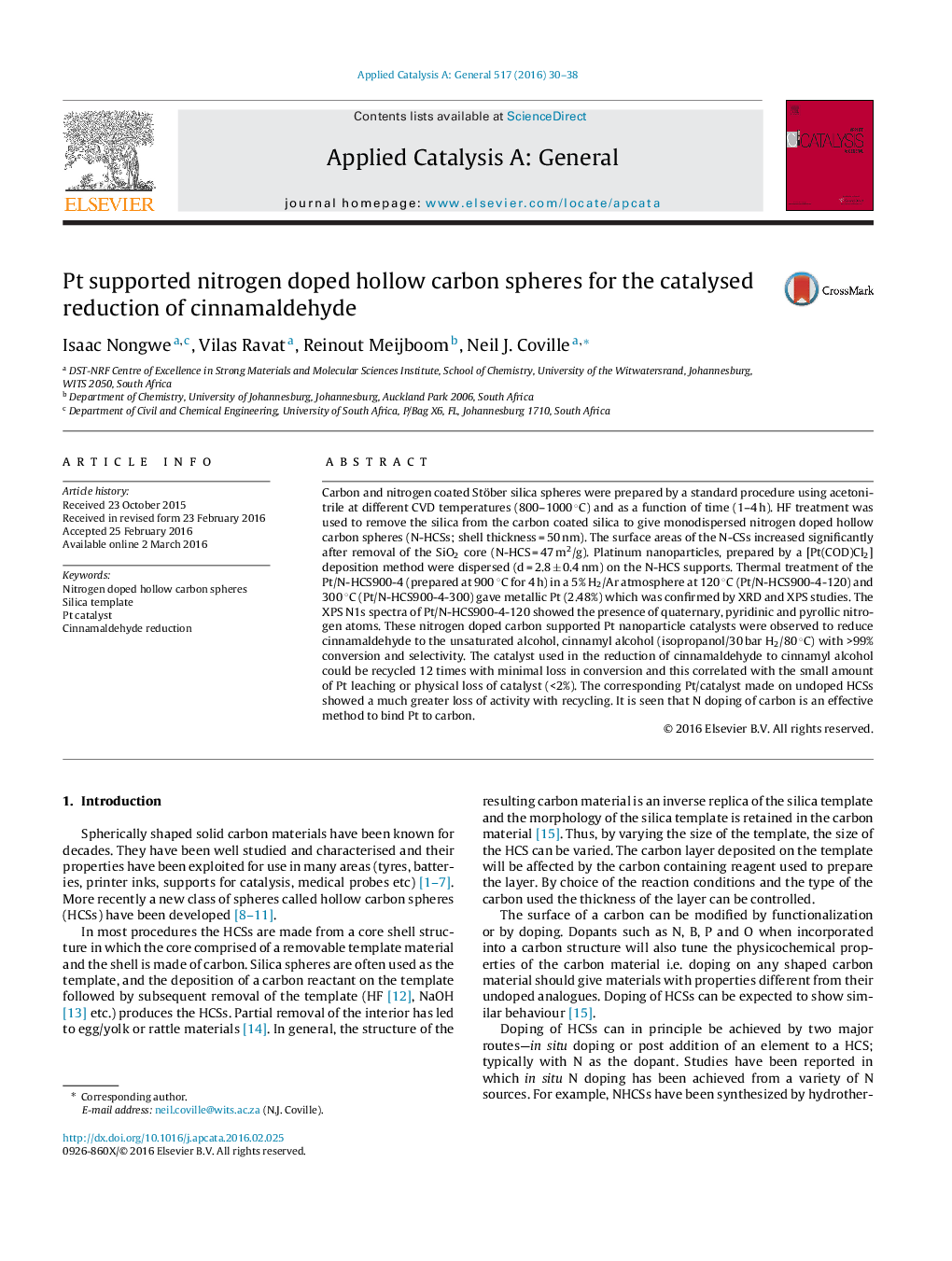| کد مقاله | کد نشریه | سال انتشار | مقاله انگلیسی | نسخه تمام متن |
|---|---|---|---|---|
| 39088 | 45806 | 2016 | 9 صفحه PDF | دانلود رایگان |

• Successful synthesis of nitrogen doped N-HCSs by using a CVD method.
• Pt was well dispersed on Pt/N-HCS900-4-120 catalyst (2.8 nm).
• Pt° is the active phase in the Pt deposited catalysts.
• Pt/N-HCS is selective, efficient and reusable for the reduction of cinnamaldehyde.
• Activity increased with temperature and pressure.
Carbon and nitrogen coated Stöber silica spheres were prepared by a standard procedure using acetonitrile at different CVD temperatures (800–1000 °C) and as a function of time (1–4 h). HF treatment was used to remove the silica from the carbon coated silica to give monodispersed nitrogen doped hollow carbon spheres (N-HCSs; shell thickness = 50 nm). The surface areas of the N-CSs increased significantly after removal of the SiO2 core (N-HCS = 47 m2/g). Platinum nanoparticles, prepared by a [Pt(COD)Cl2] deposition method were dispersed (d = 2.8 ± 0.4 nm) on the N-HCS supports. Thermal treatment of the Pt/N-HCS900-4 (prepared at 900 °C for 4 h) in a 5% H2/Ar atmosphere at 120 °C (Pt/N-HCS900-4-120) and 300 °C (Pt/N-HCS900-4-300) gave metallic Pt (2.48%) which was confirmed by XRD and XPS studies. The XPS N1s spectra of Pt/N-HCS900-4-120 showed the presence of quaternary, pyridinic and pyrollic nitrogen atoms. These nitrogen doped carbon supported Pt nanoparticle catalysts were observed to reduce cinnamaldehyde to the unsaturated alcohol, cinnamyl alcohol (isopropanol/30 bar H2/80 °C) with >99% conversion and selectivity. The catalyst used in the reduction of cinnamaldehyde to cinnamyl alcohol could be recycled 12 times with minimal loss in conversion and this correlated with the small amount of Pt leaching or physical loss of catalyst (<2%). The corresponding Pt/catalyst made on undoped HCSs showed a much greater loss of activity with recycling. It is seen that N doping of carbon is an effective method to bind Pt to carbon.
Figure optionsDownload high-quality image (84 K)Download as PowerPoint slide
Journal: Applied Catalysis A: General - Volume 517, 5 May 2016, Pages 30–38